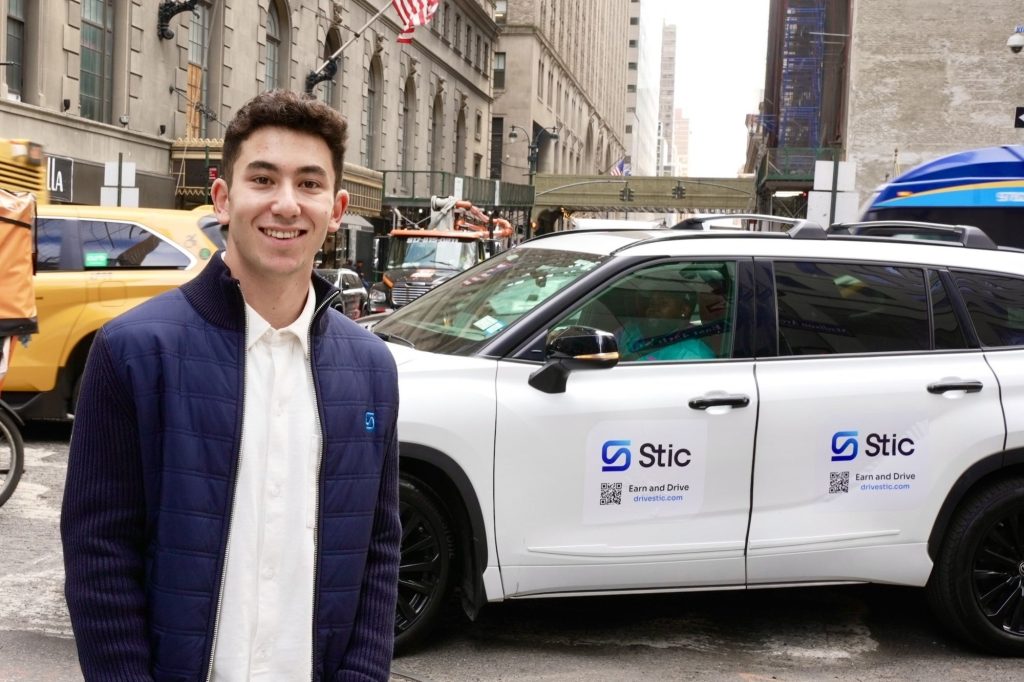Today, 21-year-old Adam Cohen is the CEO and founder of Stic, a rapidly growing ad tech startup valued at over $16 million. But just a year ago, he was just another college student struggling to find his way in the world. “When I was at UCLA, I didn’t know what I wanted to do,” Cohen admits. “I didn’t even like what I was studying.” Then, one fateful day, he was leaving the Equinox sauna while reading the Wall Street Journal when everything changed.
A Sign in the Road
The story behind Stic’s conception sounds almost like divine intervention. Cohen was reading an article about advertising being “dead” when his Uber pulled up with a magnet on the side promoting a nail tech business, complete with a phone number. “It caught my attention immediately,” Cohen says. This simple sign sparked an idea: what if drivers could supplement their income by putting advertisements on their cars?
He jumped into the Uber and began bombarding the driver with questions about how many miles she drives daily. She told him it was about 100 miles a day, or 3,000 miles a month, with about 70% of those miles paid for by Uber and delivery services. “I pointed out that she was driving 30 unpaid miles daily, and asked if she’d be interested in getting paid for those miles by placing an ad magnet on her car,” Cohen says. Her response? “Hell yes!”
Related: He Used His Severance to Launch His Own Business in 90 Days. Now His Products Are Sold in 40 Stores Worldwide.
Fast Lane to Profit
Stic isn’t the only ad tech startup focusing on out-of-home advertising (OOH). But its user-friendly business model sets it apart from other companies in the space. “We send them the sticker for free, they put it on their car, and then all they have to do is start driving,” says Cohen. Once the removable ad is applied, drivers activate Stic’s app, which tracks each mile driven, allowing advertisers to reach specific markets and enabling drivers to earn passive income based on mileage—up to $0.14 per mile. Unlike its competitors, which often require drivers to pay upfront fees—sometimes $125 just to get a screen or $95 for a wrap—Stic allows drivers to make money without spending any.
Cohen explains the hassles of traditional vehicle advertising models: drivers pay out of pocket and face lengthy installation times, often spending six to eight hours wrapping their cars, only to swap out ads after a week. “It’s inefficient,” Cohen says, referring to his competitors’ business model. “You only make money if you stay in these certain areas for like, eight hours, and if you don’t, you’re not going to get paid.
For high-mileage drivers, such as those working for rideshare services, the earnings potential with Stic is substantial, offering a new way to monetize daily commutes and participate in the gig economy. “There are people where I’m from in LA who drive 80 miles a day just to get to work,” Cohen says. “They might as well just throw a sticker on and make some extra money.”
Related: He Raced at 330 MPH Before Taking Over the Family Business — Here’s What Being in the Driver’s Seat Taught Him About Leadership
Hitting the Gas
Cohen attributes his rapid success to former Pay Pal CEO and billionaire Peter Thiel’s “Zero to One” philosophy. The philosophy argues that the most valuable companies are the ones that create something new rather than try to be the best version of an existing thing. Cohen believes his company falls under that unique category. “If I wanted to start a sunglass company, I could just Google how to do it: find a manufacturer, design the product, find a distributor, and so on,” Cohen says. “But with Stic, there was no blueprint.”
He cites Uber as a successful example of this philosophy, explaining how Uber was not revolutionary because of the ride-sharing idea but rather the autonomy it provided drivers. “You don’t have to go get a whole taxi medallion and get a taxi car and do this whole other crazy expense,” Cohen says. “You just submit your driver’s license, and you’re approved. Now, you get to drive and make an income you could never before for free. That’s why Uber took out the taxis.”
But Cohen didn’t just borrow Uber’s concept, he also built Stic with an API-driven, machine-learning platform that tracks movement patterns, similar to how the ridesharing giant maps demand in real-time. This technology detects factors like pedestrians, bikers, buses, and surrounding vehicles. According to him, this system is more effective than traditional billboards, as the moving nature of the advertisements places them in unexpected locations, capturing people’s attention in a more impactful way. “We’re giving drivers a no-brainer,” Cohen says. “We’re basically creating the Uber of advertising.”
Related: Need Something Fast? These Entrepreneurs Created a Fleet of Self-Driving ‘Stores on Wheels’ That You Can Hail With the Tap of a Button.
Read the full article here









